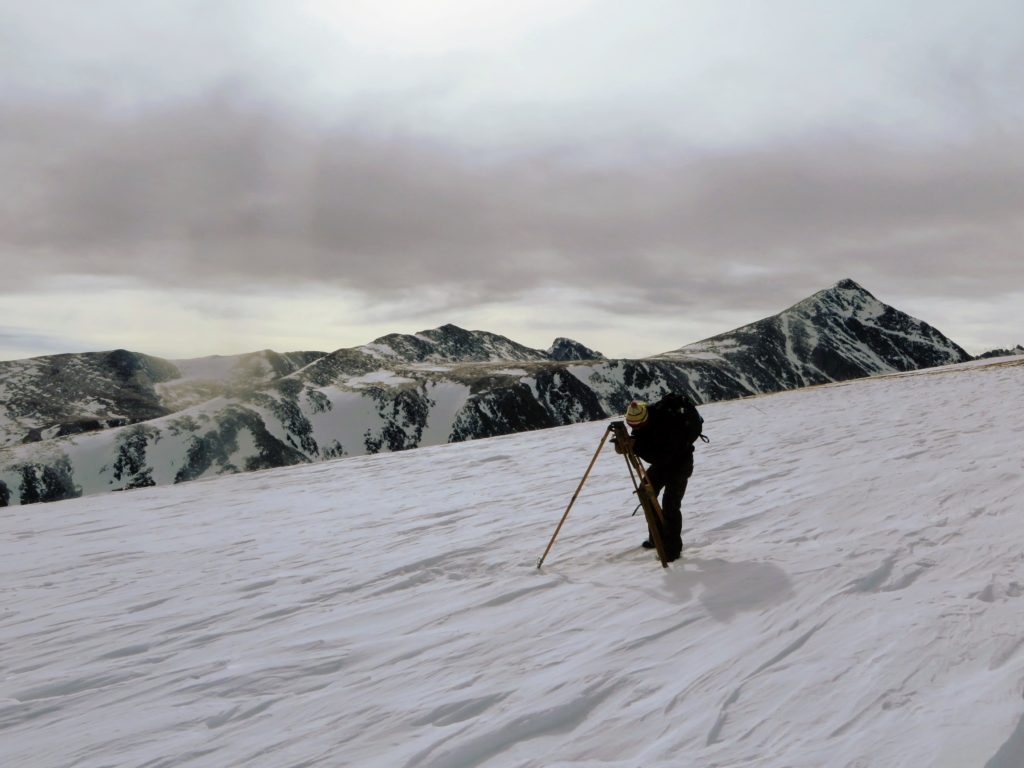Photo: Clea ready for fieldwork
My aim as a mentor is to lead students through short projects that help them develop as scientists and professionals. For each student, I design a small project that will showcase their skills while advancing my own research.
My thirteen undergraduate and recent-graduate mentees have come from a range of academic backgrounds (see below). They have been gender-balanced and as racially diverse as the US population average, which is considerably more diverse than an average group of computer scientists or geologists.
These students have worked with me on fieldwork, data analysis, and computational projects. Thus far, all of them have successfully found full-time work in their fields.
 Backgrounds and outcomes of mentees (updated 2018)
Backgrounds and outcomes of mentees (updated 2018)
Research assistants
Jenna Horrall: A GAN model for dune migration (summer 2019)
Jenna joined Lawrence Livermore National Laboratory (LLNL) for a summer internship while pursuing her Computer Science degree at James Madison University. She learned how to run scientific simulations on LLNL supercomputers, and adapted a generative adversarial neural network to emulate the behavior of a sand dune simulation. Jenna expects to graduate in 2021.
Divya Mohan: Deep neural network model of a cellular automaton (summer 2019)
Divya was working with me on a cellular automaton simulation of sand dunes at LLNL, when she discovered a paper showing that cellular automata could be exactly mimicked by carefully-structured deep neural networks. She developed a deep neural network, trained it on the sand dune model, and adapted her network to capture both the 2D and 3D structures of sand dunes. Divya plans to graduate from UC Berkeley with a degree in Computer Science in 2021.
Adam Rubin : Simulation of snowfall on dunes (2018-2019)
Adam works with me to model how snow accumulates in ripples and dunes. He added a snowfall capability to ReSCAL, a C++ model of geophysical interfaces, and ran a series of numerical experiments to test dune responses to varying wind speeds and snowfall rates. Adam will graduate with a B.S. in Environmental Engineering in 2019 and work as a water resource consultant.
Chelsea Herbertson : Scaling Laws for snow bedforms (spring/fall 2018)
Chelsea was interested in applying differential equations to my snow data, and in gaining her first geoscience work experience. She tracked the heights and velocities of moving snow dunes on Niwot Ridge, and presented her work at the CU Hydrologic Sciences Symposium. She graduated from CU with a B.S. in Geophysics in 2018, and now works with the Bureau of Land Management.
Carlos Downie : Investigating dune simulation with Fourier analysis (summer 2018)
After graduating with honors from Sonoma State University (Comp. Sci., ’18), Carlos spent a summer working at the Data Science Summer Institute at LLNL. He worked with me and Dr. Barry Rountree to write a data reduction and analysis package: he took in topographic data from a self-organizing system, such as a dune field, and used Fourier analysis to extract its unstable wavelengths and dispersion relation. Carlos began working as a Global Security at LLNL at the end of 2018.
Aaron Robeson : Extracting dune velocities with cross-correlation (summer 2018)
Aaron spent his junior summer as a Data Science Summer Institute at LLNL. He worked with me and Dr. Barry Rountree to write a Python analysis package that used cross-correlation to extract dune velocities from topographic data. Aaron adjusted the algorithms he was using to handle the periodic boundary conditions of our data at minimal computational cost. He is currently working towards a B.S. in Computer Science at Ohio State University.
Madonna Yoder : Dynamics of snow dunes (winter 2018)
Madonna joined me after finishing her Bachelor’s (Earth Science, MIT ’17). We worked to analyze the dynamics of snow dunes. She wrote Python code to analyze field data from previous winters. During this process, she recognized difficulties with my current data and joined me in the field to improve my equipment setup. She is now a computational geoscientist at Lawrence Livermore National Lab.
Clea Bertholet : Snow bedforms in the Colorado Front Range (honors thesis, 2016-2017)
Clea (pictured above) had all the fun and confusion of being my first field assistant. She assisted me as I explored new field sites, rescued my equipment from burial by snow, and learned to identify different snow bedforms in the field. She used this initial field data to write a thesis, supervised by Robert Anderson, that earned departmental honors. She graduated in 2017 with a double-major in Geology and Ecology and now works for the US Forest Service.
Alexandra Orrego : Subalpine fir mortality (summer 2016)
Alexandra came to CU through the UNAVCO RESESS program, an undergraduate internship for minority students in the geosciences. She used geospatial techniques to study tree mortality in the Rocky Mountain Region (result: pine trees are dying, and the problem is beetles). I was her communications mentor, and helped her conceptualize her research and write her final presentation and paper. She graduated from Georgia State in 2018 with a B.S. in Geoscience and a minor in Computer Science, and is now works on natural resource management for the Atlanta Regional Commission.
Gage Hamel and Jon von Oosten have joined me for shorter field projects at CU-Boulder.
Jeff Booher-Kaeding and Eric Green worked with me on code development for a few weeks at LLNL.
I’ve also served as a graduate peer mentor for Chengyi Luo (CU-Boulder Physics, 2018).
Gage sets up the first time-lapse camera on Niwot Ridge, Colorado.
 Madonna thought she saw snow dunes on Lily Lake.
Madonna thought she saw snow dunes on Lily Lake.